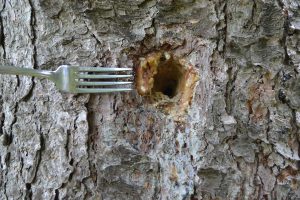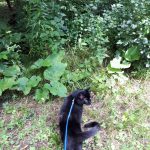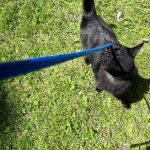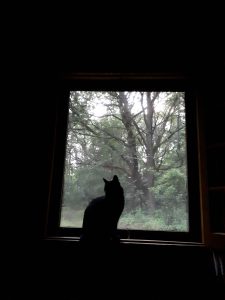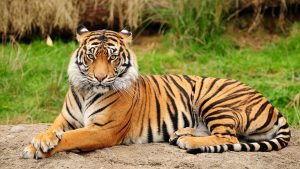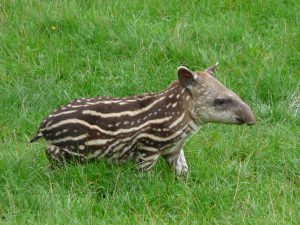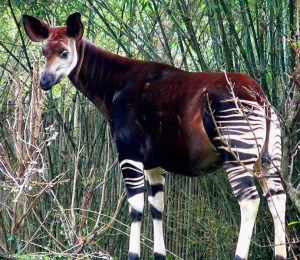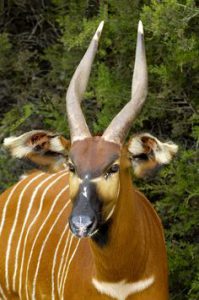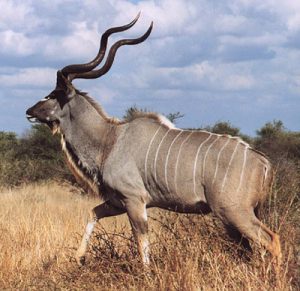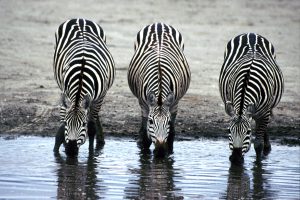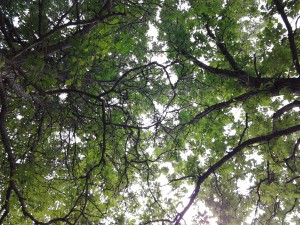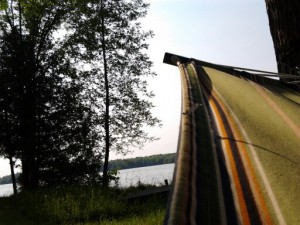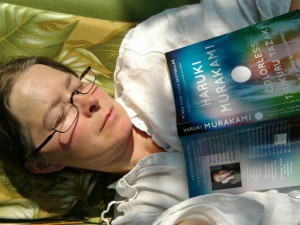I was as strong in biology in high school as I was in the arts. When, after some trial and error and debate, I finally chose a path, I pursued the arts. When I see the direction biology has gone in the ensuing decades, I’m grateful for the wisdom of my younger self.
When I was in school, the notion was that animals existed as part of a food chain—with humans at the apex (of course). The human ego likes to place us at the top. This is the rhetoric of “Man, the Custodian of Creation,” based on the religious idea that men (and women and everyone between—humans), were placed on Earth as caretakers of what God (or Gods or Goddesses or Mother Nature or Gaia) had created. Given our record, we are clearly at risk of being smote. Whether considering wild or domesticated species, the way we “manage” non-human animals is appalling.
In practice, humans remain at the apex, so that if a human animal is threatened by a non-human animal, even if the human animal is encroaching on the non-human animal’s turf, the non-human animal usually winds up dead. But as we begin to understand how species actually inhabit their territories, we’re realizing that the correlations between animals are much more complex than we’d previously imagined. While we’ve shifted our thinking away from a food chain and towards a food web, these webs are much more complex than we fully comprehend or appreciate. And yet we have the audacity to continue thinking that wild species are somehow ours to “manage.” Through a combination of recklessness and ego, we’re doing a lousy job.

Image by Mansur Gidfar from http://www.bewareofimages.com/
For instance, tigers have lost over 90% of their habitat to human encroachment. Wild tiger populations are down to about 3,200 individuals, and yet they continue to be killed by poachers and because of conflict with human interests. Three tiger subspecies have been hunted to extinction.
In the oceans, estimates for the number of sharks killed annually from overfishing, finning and bycatch range from 100-200 million. While humans generally fear sharks, this slaughter compares with only 72 attacks by sharks on humans in 2013, only ten of which resulted in death. The Pacific coast off California has seen a marked increase in the Humboldt squid population—an animal in whose waters it would be much more dangerous to intrude. While reasons for this population explosion are up for debate, some scientists think it may be due to shark overfishing, as sharks enjoy raw calamari. Sharks, like tigers, are apex predators; remove the sharks, and the natural balance and environment are shaken, sometimes in surprising ways.
But this isn’t just a pissing match between human and non-human predators. Elephants and rhinos are strict vegetarians, and yet they too are being poached at an alarming rate for their tusks and horns. In spite of sanctions and political pressure, demand continues to grow, along with the estimates of the numbers of animals killed. A shocking 30,000 elephants are killed each year for their tusks. In South Africa alone, over 1,000 rhinos were poached in 2013. Consider too that these animals are slow to reach sexual maturity, have long gestation periods, and usually produce only one calf that requires maternal care for at least two or three years.
And these are just a few of the species being decimated by human greed and ignorance. In Canada, we’re acutely aware of the plight of polar bears due to loss of habitat from global warming. Right whale populations are now estimated at about 300-400 individuals worldwide, due to competition with industry and fishing, as well as climate change.
While some organizations, like the World Wildlife Fund and Wild Aid raise awareness through education, support ecotourism as more financially viable than poaching, and work to protect species at risk, other organizations created to caretake wildlife use culling to control populations, rather than supporting natural ecosystems to do this work. I wrote about some disturbing culls a few years ago.
This is the kind of “management” practise that recently led the Copenhagen Zoo to kill a giraffe named Marius, publically dissect him, then feed him to the lions. The zoo refused all alternative offers, and the zoo’s biologist, Stenbaek Bro, argued that Marius was cluttering up the gene pool and that the public dissection was educational. While he’s correct that in the medieval era public dissections were performed for this reason, there is no possible justification now. Anyone who wants to see a giraffe’s anatomy can simply go online or read a book to find the information, without killing another giraffe or traumatizing curious humans.
But it’s not just zoos killing animals. American Wildlife Services are reported to have “accidentally” killed in excess of 50,000 animals since 2000, including protected and rare species. Some organizations are bizarre hybrids that support conservation so their members have plenty of “game” for “sport.” For instance, the British Association for Shooting and Conservation aims, “to promote and protect sporting shooting and the well-being of the natural environment.” This is the kind of statement that assumes that we have a right to “manage” other species and that we actually understand all the complexities of interspecies interrelations.
And it’s not just wild animals at stake. Domesticated animals are non-human animals that human animals have tamed over many generations. We have altered their DNA and behaviour. Recent evidence shows that cats have been domesticated for over 9500 years and dogs have been our pets for 18,800 to 32,100 years. To my mind, a non-human animal that we have domesticated, tamed, is now our responsibility. And yet we don’t act very responsibly. Toronto has an estimate feral cat population of 100,000-200,000. Some of these cats started as someone’s pet, but the someone who adopted them, for whatever reason, didn’t have them spayed or neutered, or abandoned them when they moved. Cats reproduce at an alarming rate (even in the wild, given adequate habitat and hunting grounds), causing the feral population to spike. Organizations like Toronto Street Cat, a coalition of rescue organizations, work hard to neuter these animals, provide them with food and shelter, and find homes for adoptable kittens.
What happens when such volunteer measures aren’t taken? Prior to the 2008 Bejing Summer Olympics, thousands of stray cats were killed. Before the Euro 2012 Soccer Championship in the Ukraine, thousands of stray dogs were killed. And before and during this year’s Winter Olympics in Sochi, thousands of stray dogs, deemed “biological trash,” were killed. In many cases, these domesticated animals were dispatched in horrifying and inhumane ways. But with millions of stray cats and dogs euthanized in shelters each year, we can hardly boast of a superior record.
And this doesn’t even touch the millions of non-human animals killed each year in the name of “sport,” or “fashion,” or “science,” when better alternatives are often available. This doesn’t even touch the contentious issue of the billions of non-human animals raised and slaughtered for food for human animals each year.
Although human animals have enormous egos and a strong sense of entitlement, it is abundantly clear that we do not have the necessary knowledge to “manage” non-human animals successfully. And yet we like to pretend that we do. Part of the oil/tar sands rhetoric is that this destructive industry will put nature back just the way it was when they’re done. Unfortunately, we don’t know how to do that. A recent short film, How Wolves Change Rivers, underscores how much we don’t understand about natural systems and ecological balances, how much we don’t understand or appreciate the complexity of the natural web of life. When we do such a lousy job of managing our own population, how are we possibly qualified to manage the populations and habitats of other animals?
© Catherine Jenkins 2014 all rights reserved
Like this:
Like Loading...


